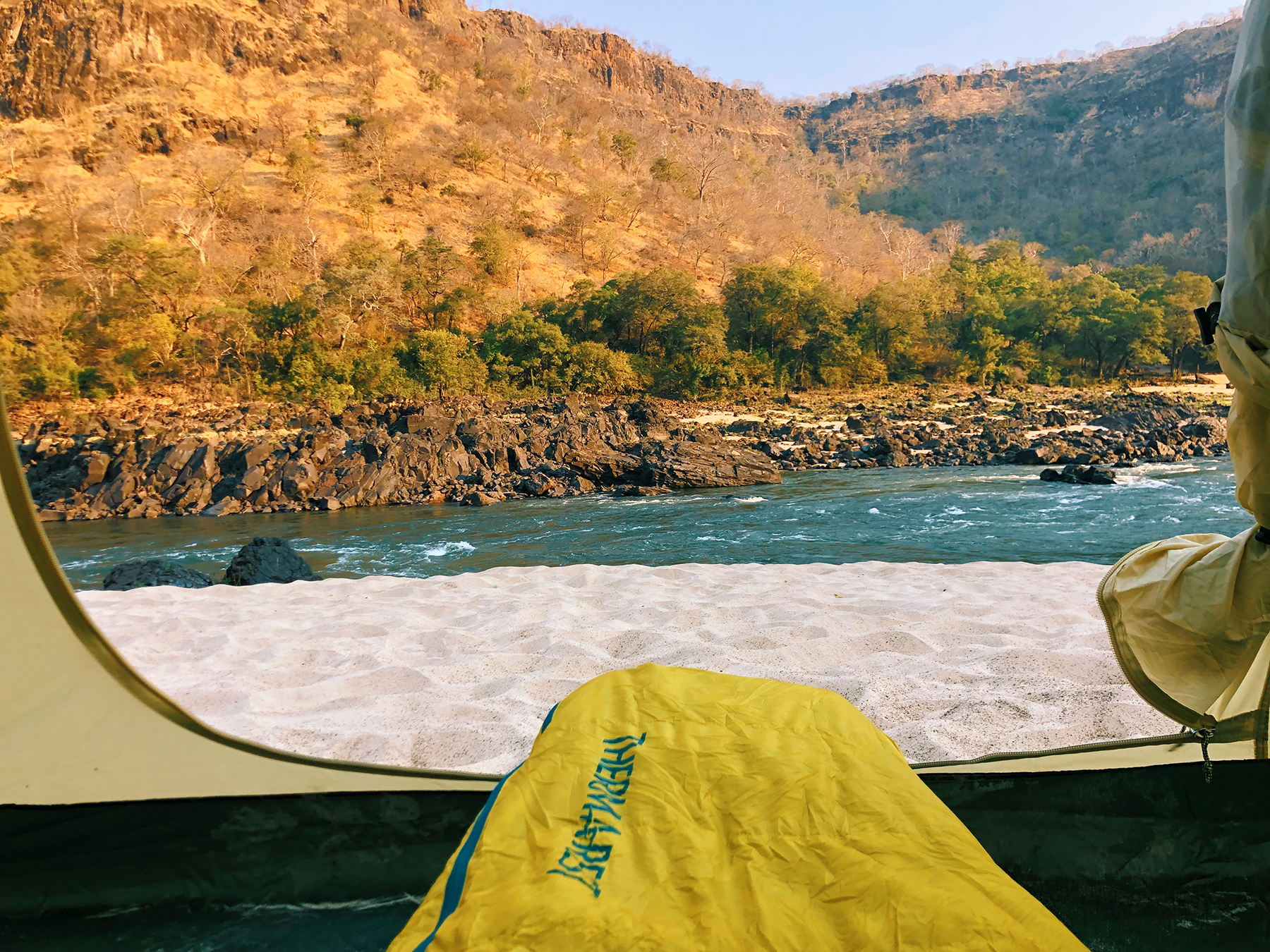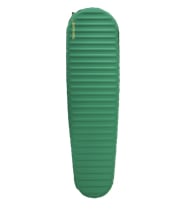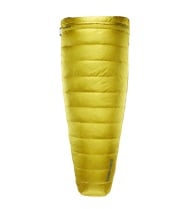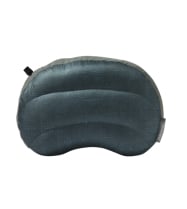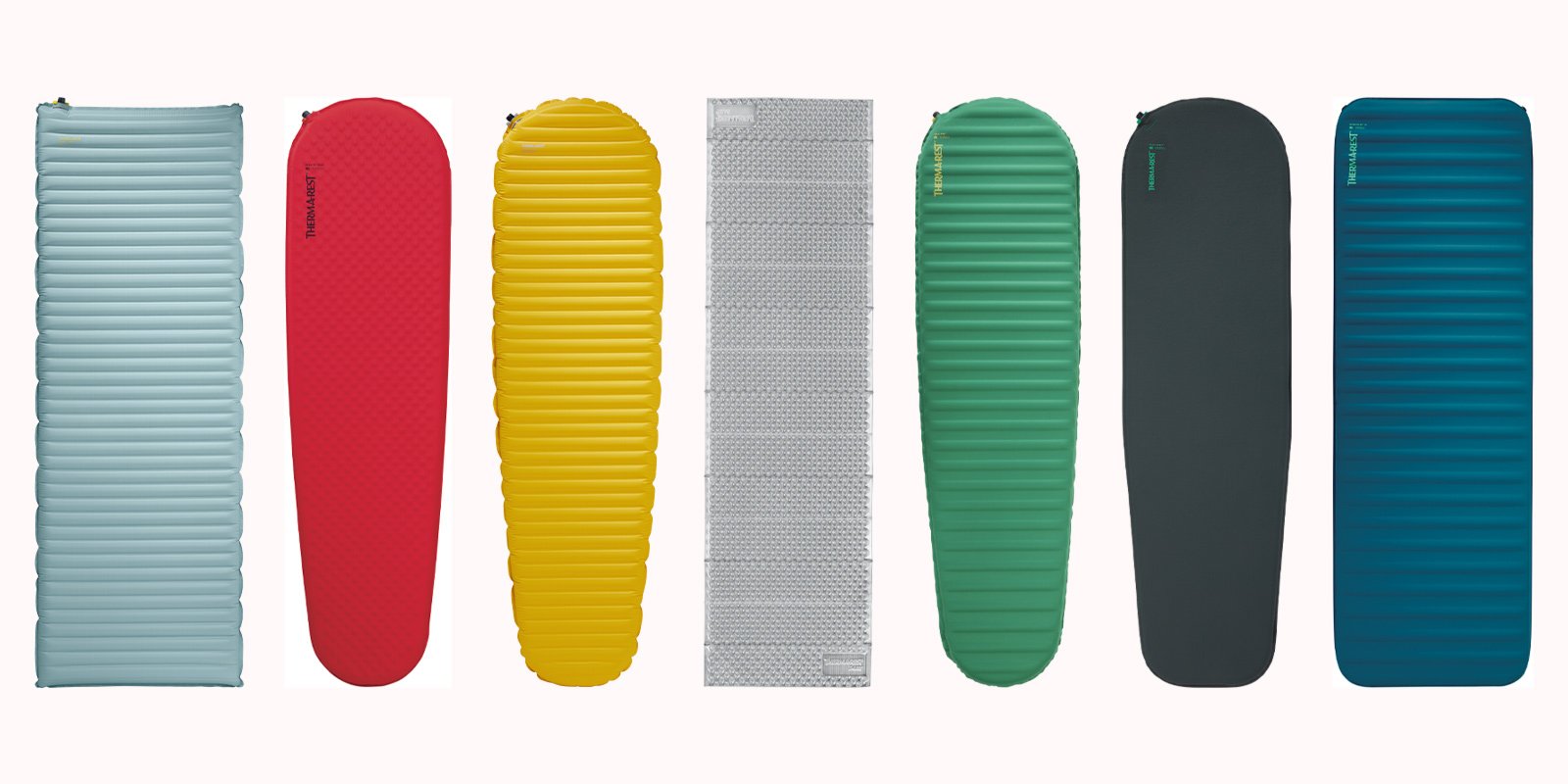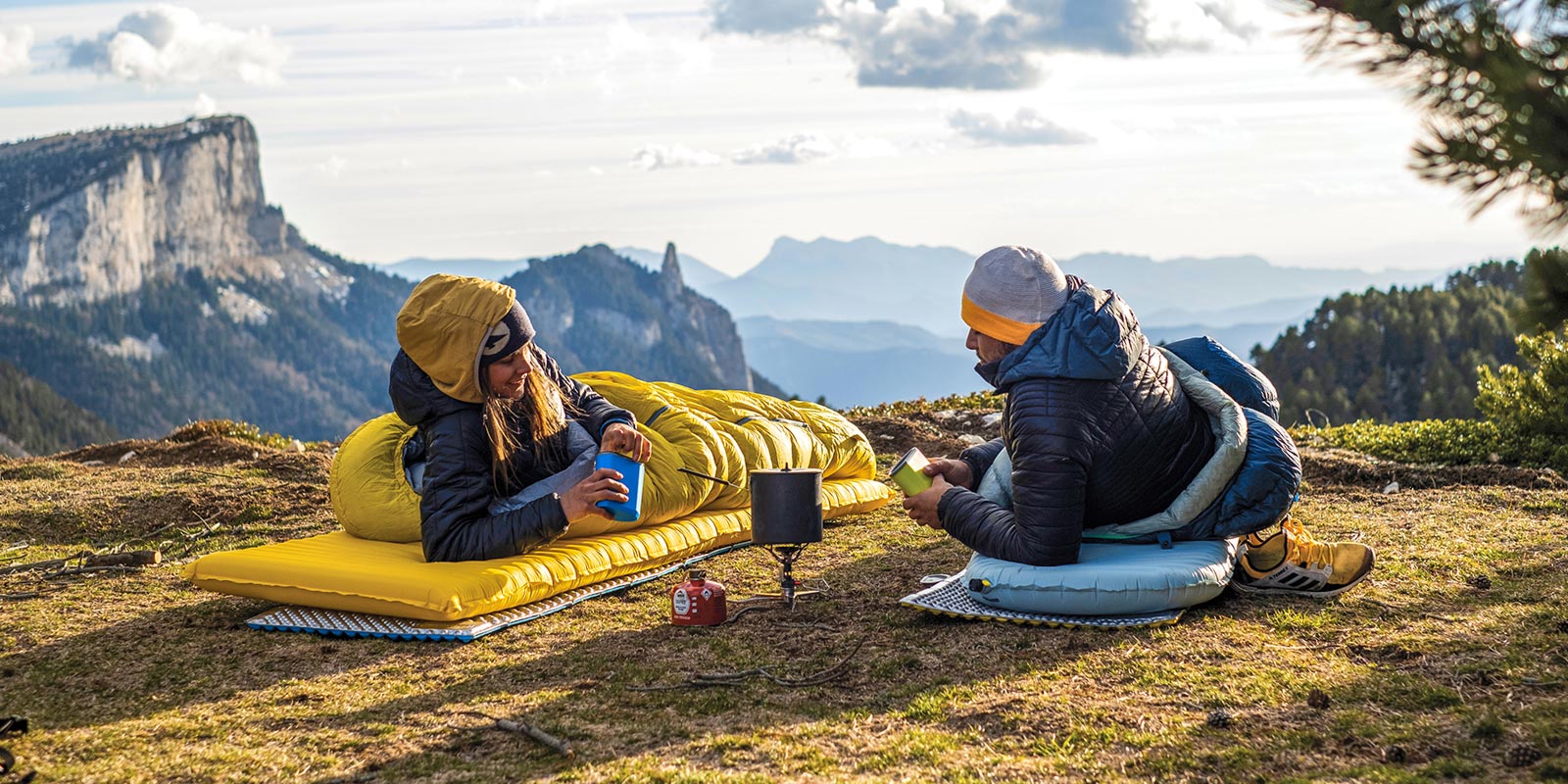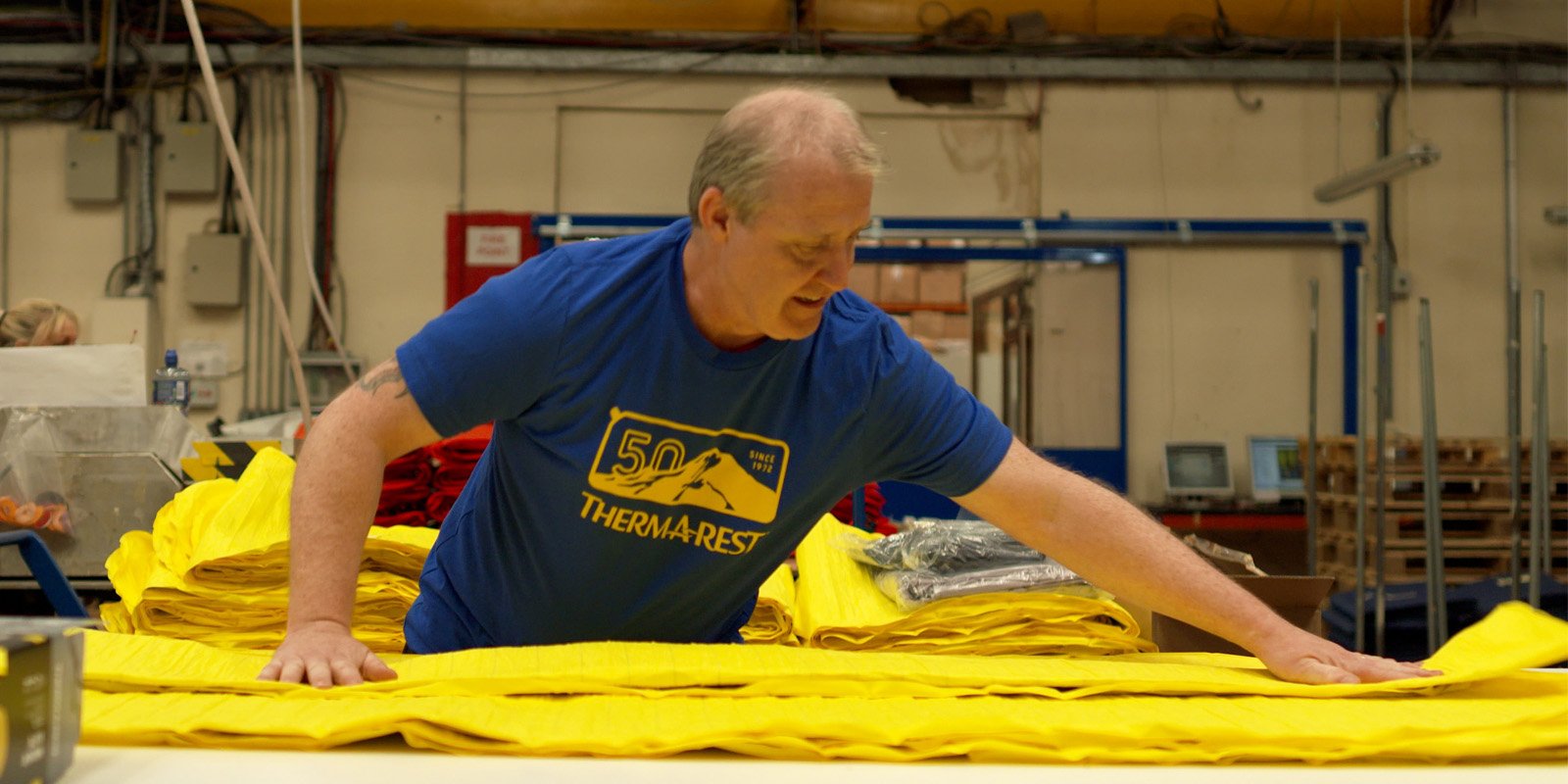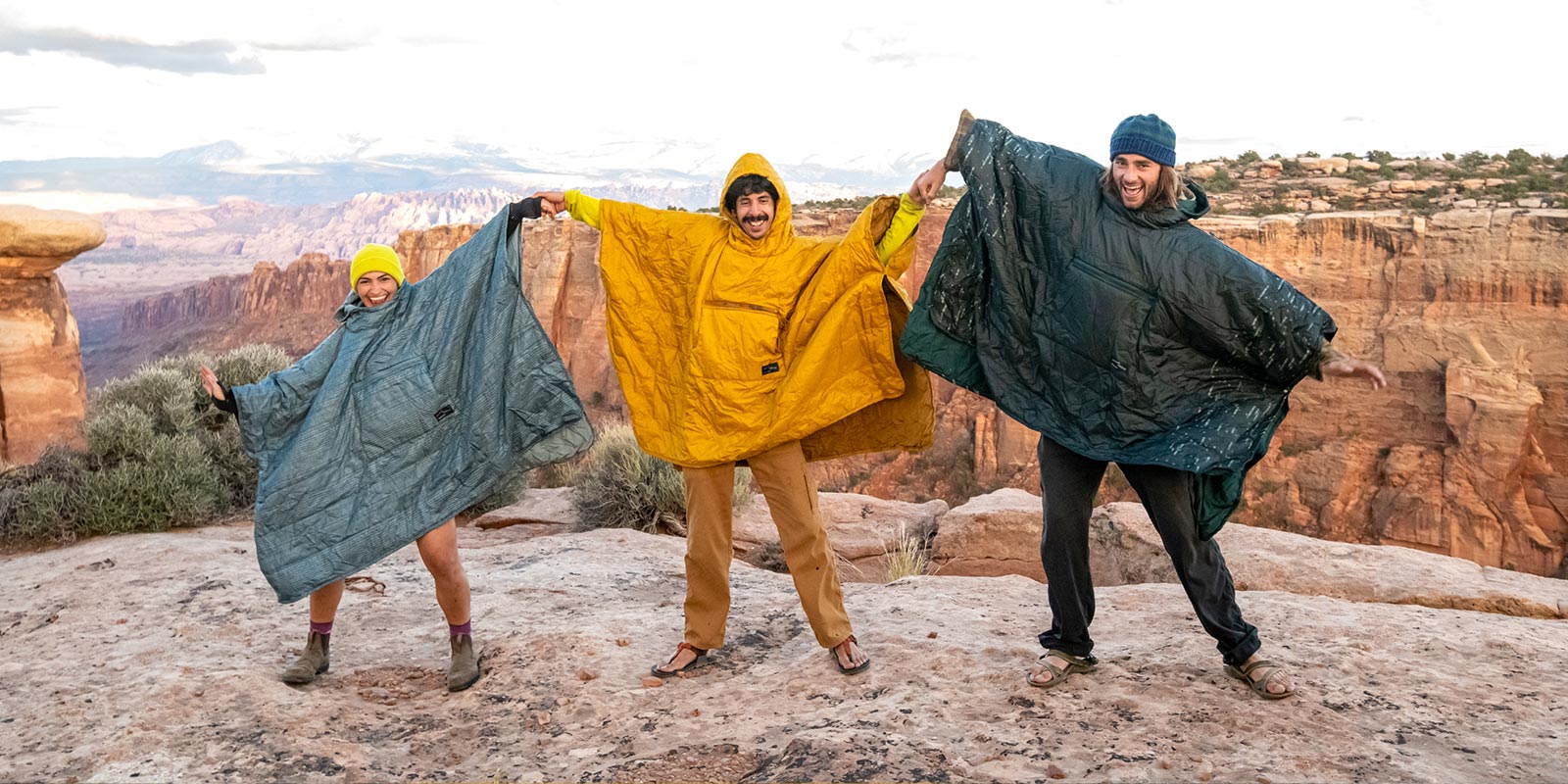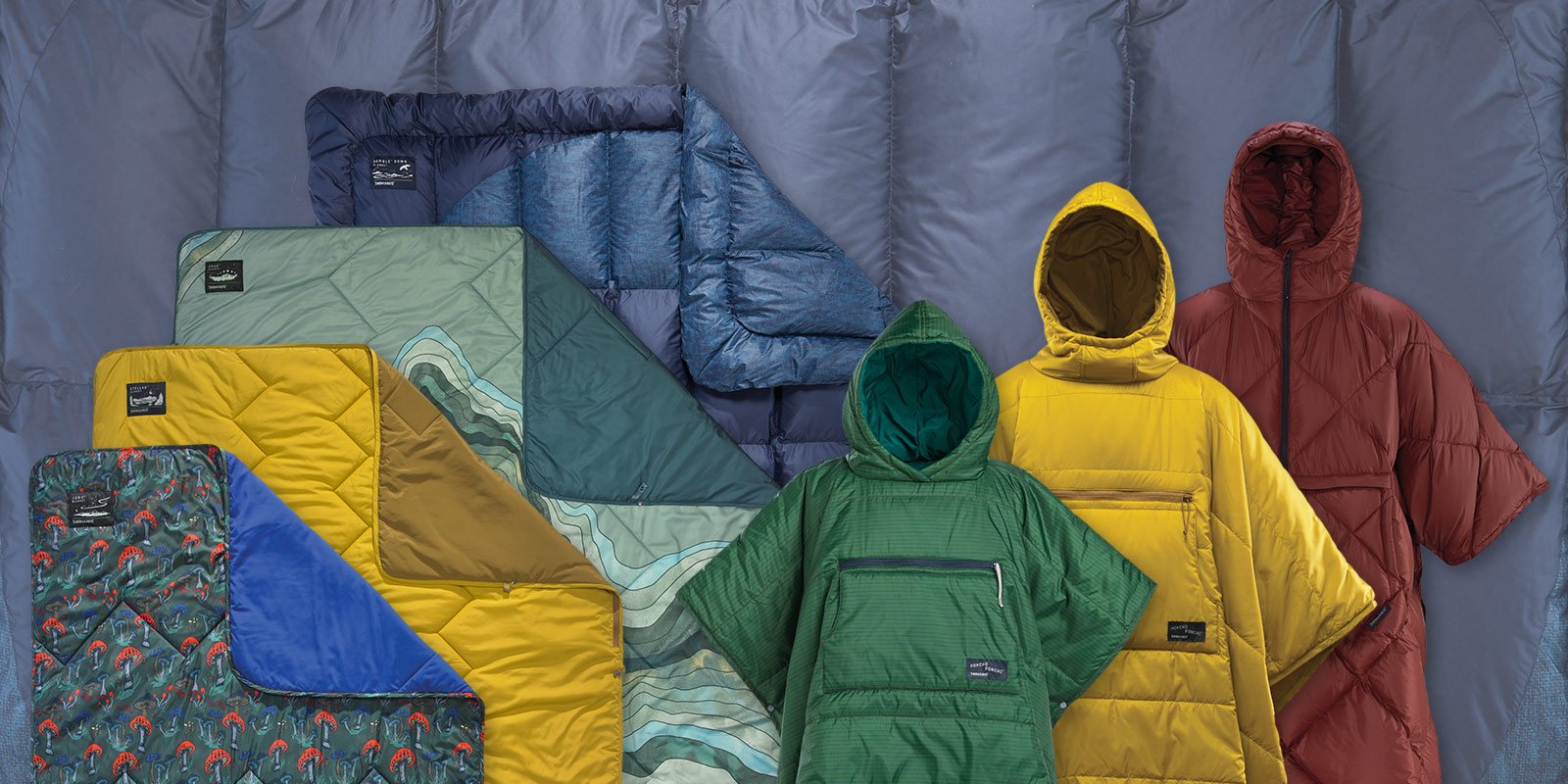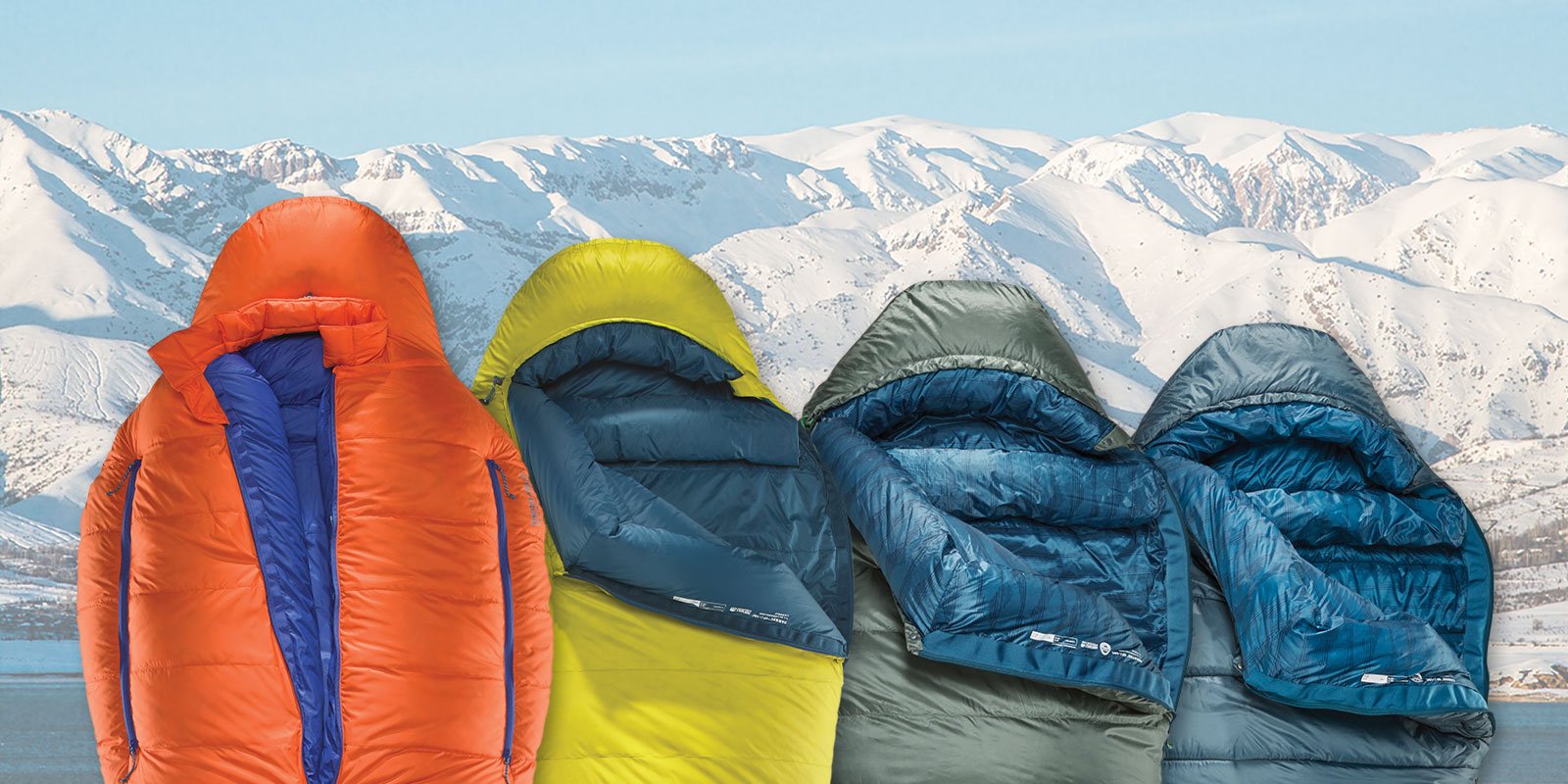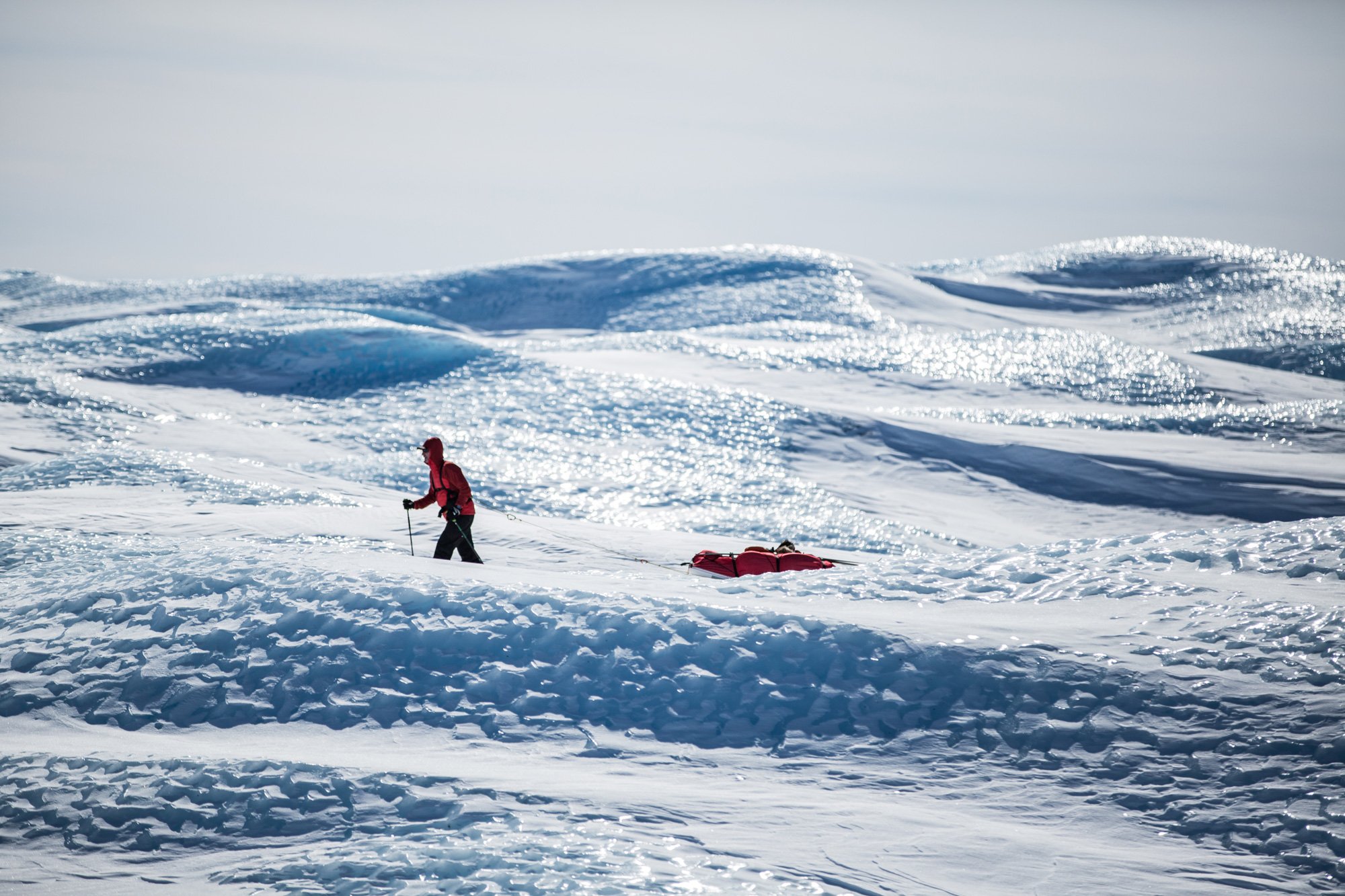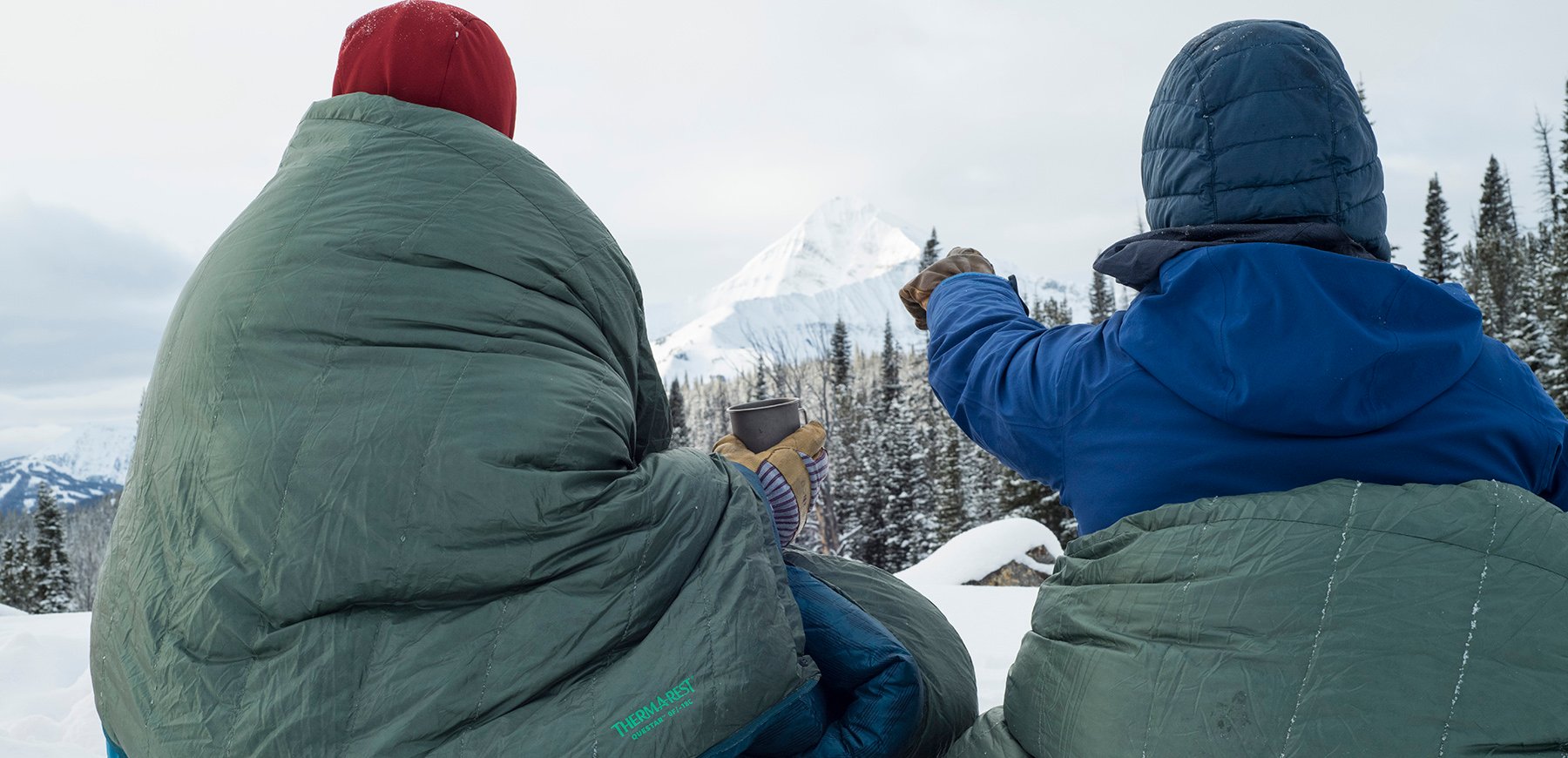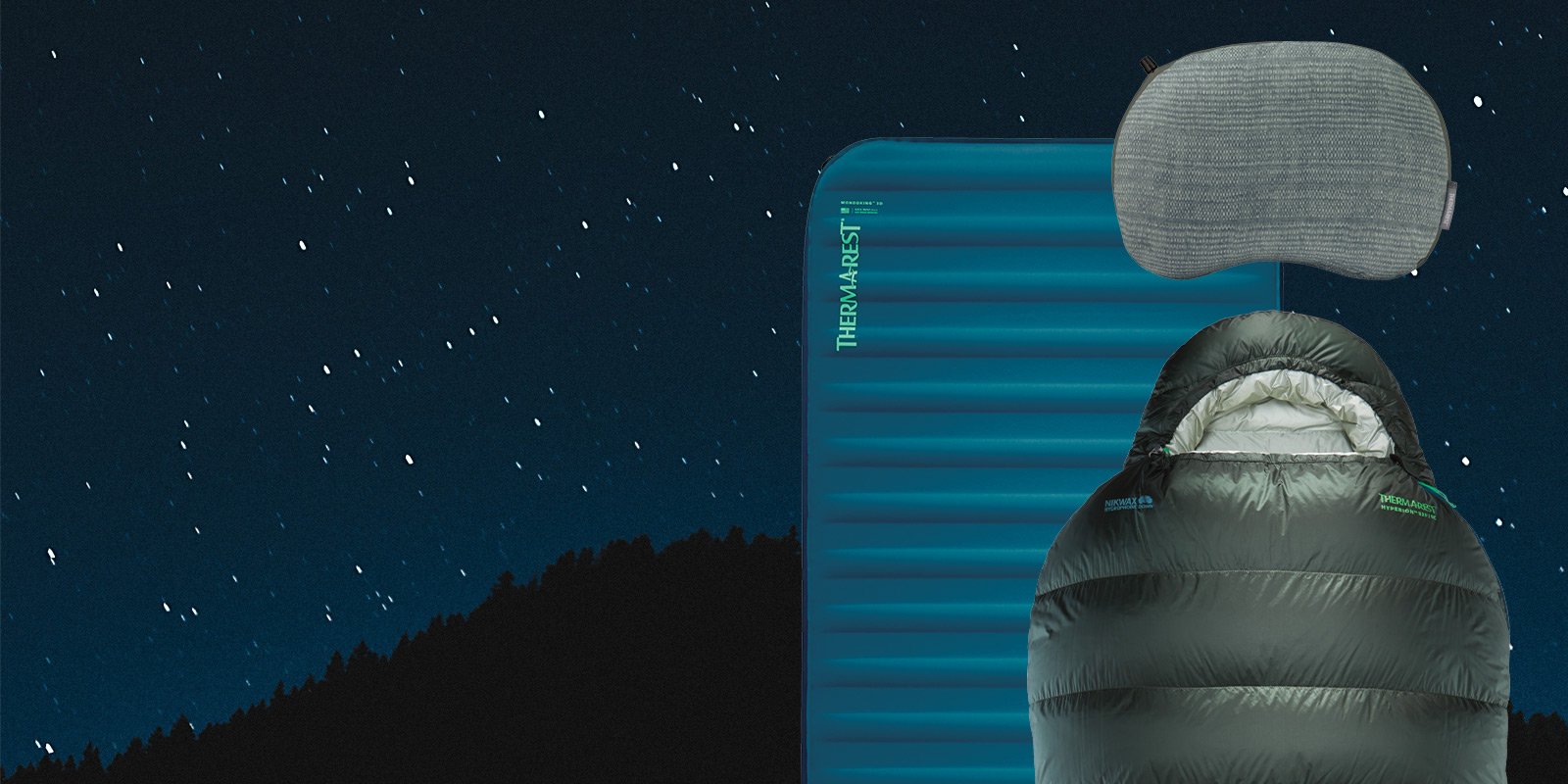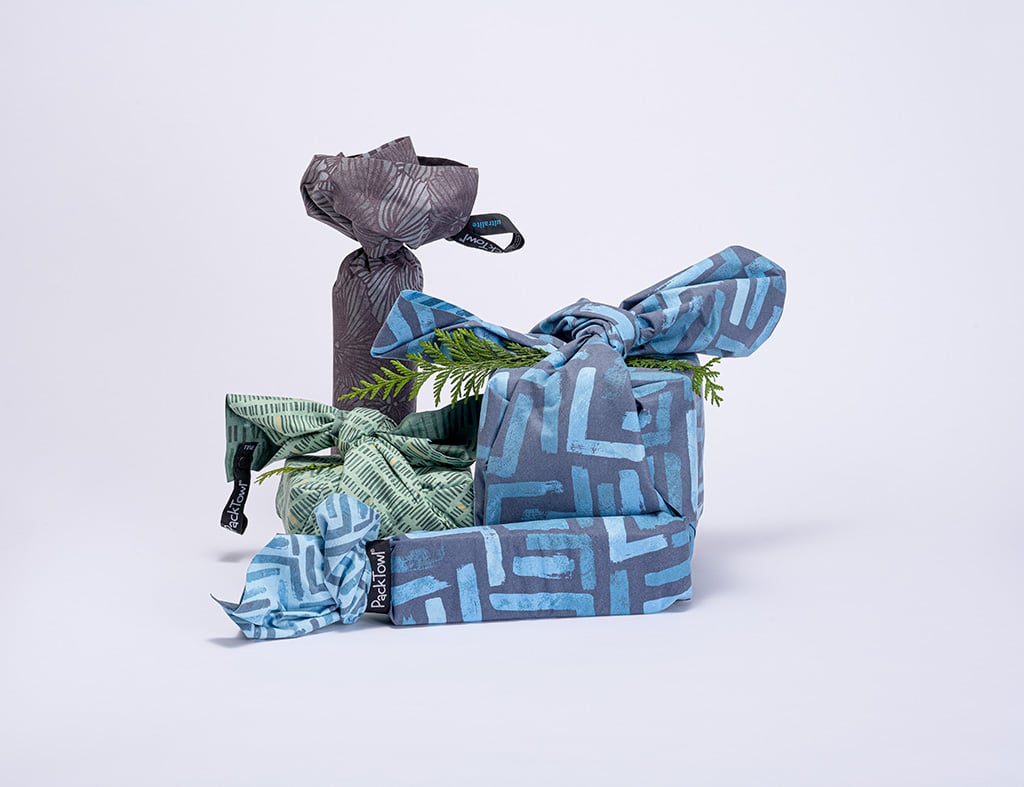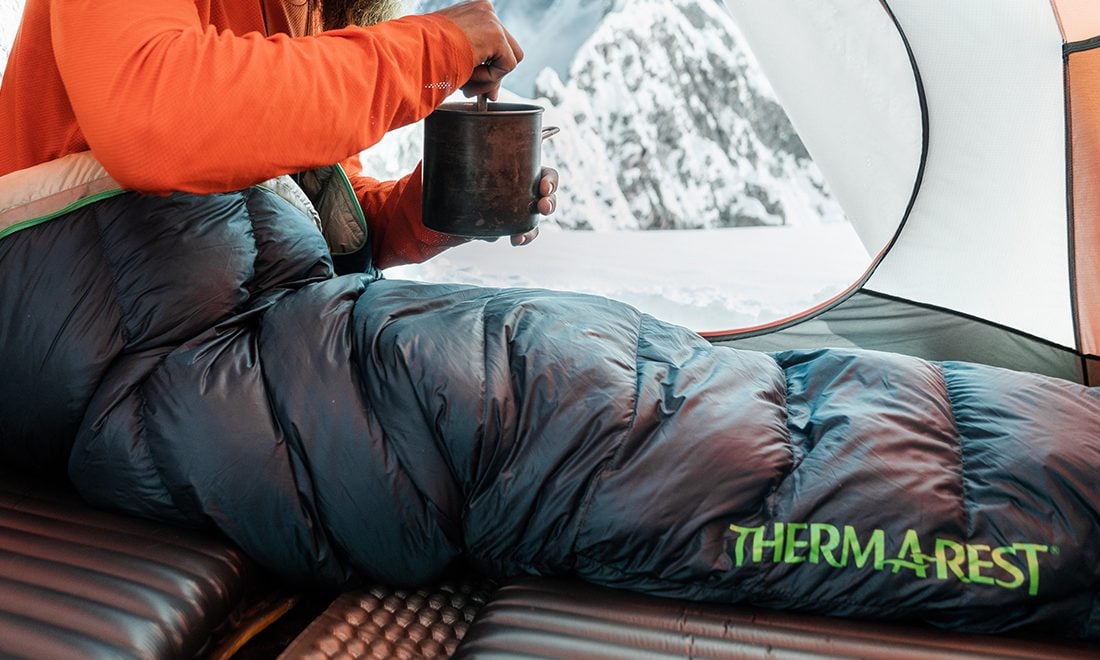With its dizzying whirlpools, roller coaster wave trains, and sweet lines, it’s no wonder the crocodile and hippopotamus infested waters of the mighty Zambezi River are a bucket list item for those in pursuit of whitewater rafting thrills.
Beginning at the base of the wondrous Victoria Falls, the middle Zambezi River carves through basalt lava deposits, creating the Batoka Gorge: defined by its ebony-colored crags, foreboding class IV, V, and VI whitewater rapids, and maelstrom-laden river narrows. However, the impending construction of a hydroelectric dam between Victoria Falls and Lake Kariba should make the Zambezi River a priority for all those interested one of the world’s best whitewater rafting trips. Once built, the trip will no longer exist.
History/General Information
Stretching roughly 2,200 miles, the Zambezi River is the fourth longest river in Africa. From its source in the Kaleni Hills of Zambia it meanders through the south-central reaches of sub-Saharan Africa, crossing or bordering Angola, Namibia, Botswana, Zimbabwe, and Mozambique before depositing into the Mozambique Channel.
Victoria Falls (Mosi-oa-Tunya to the local Kalolo-Lozi people meaning “the smoke that thunders”) is the only Natural Wonder of the World located in Africa. It is surely the river’s most prominent feature. The falls are nearly a mile wide (approximately 5,500 feet) and 355 feet tall at their highest point. Heading east from Victoria Falls, the middle Zambezi is infamous for chiseling a deep gorge through the basalt plateaus of Zambia and Zimbabwe. Due to its wild and treacherous flows, most locals avoid the middle Zambezi waters with the exception of fisherman and rebellious children; catching tigerfish and bream for smoked fish stew.
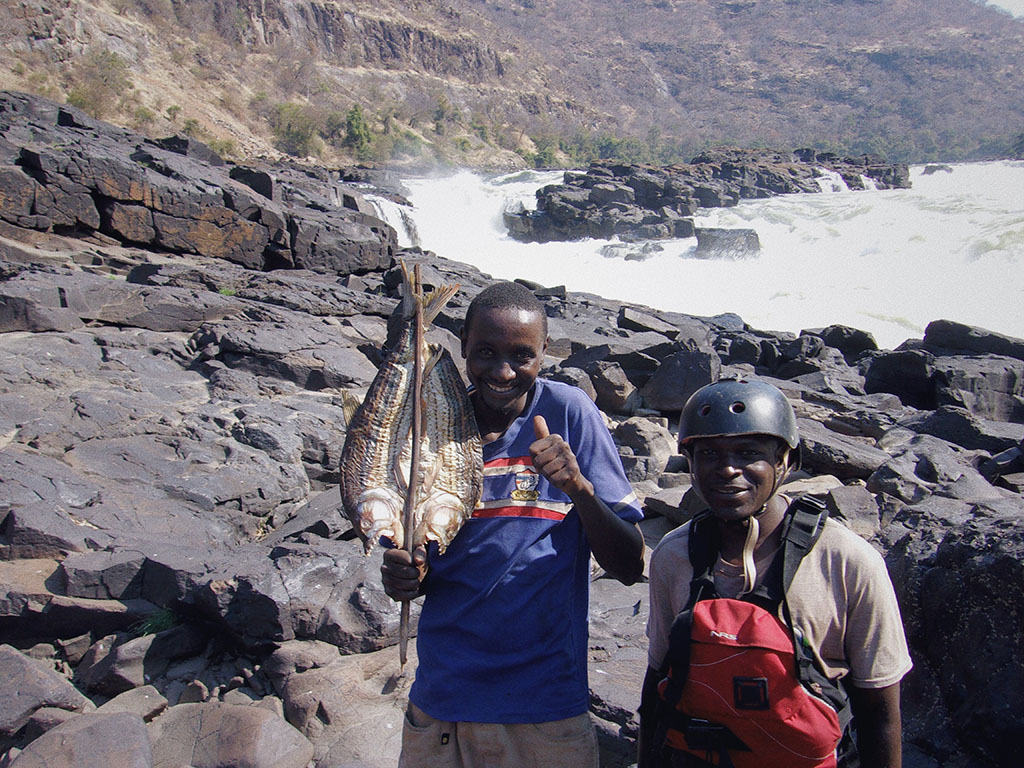 Melvin, a local fisherman, and Makuma, the head porter, posing with a smoked tigerfish below Chabango Falls on Day 4.
Melvin, a local fisherman, and Makuma, the head porter, posing with a smoked tigerfish below Chabango Falls on Day 4.Whitewater Rafting on the Zambezi
This has to be worth it, right?
This was my initial thought as I stepped onto the runway tarmac in Livingstone, Zambia with the stench of seared rubber and burnt jet fuel invading my nostrils. I endured over 40 hours of travel including three layovers, two red eyes, and encroaching jet lag to reach my excursion hub and final destination.
Not only was this my first multiday rafting trip, but a 7-day, 6-night expedition into the heart of the African bush. Our group consisted of five American passengers, four Zambian/Zimbabwean crew members with almost 50 years of shared experience on the Zambezi, and numerous porters and local fishermen who helped throughout our journey.
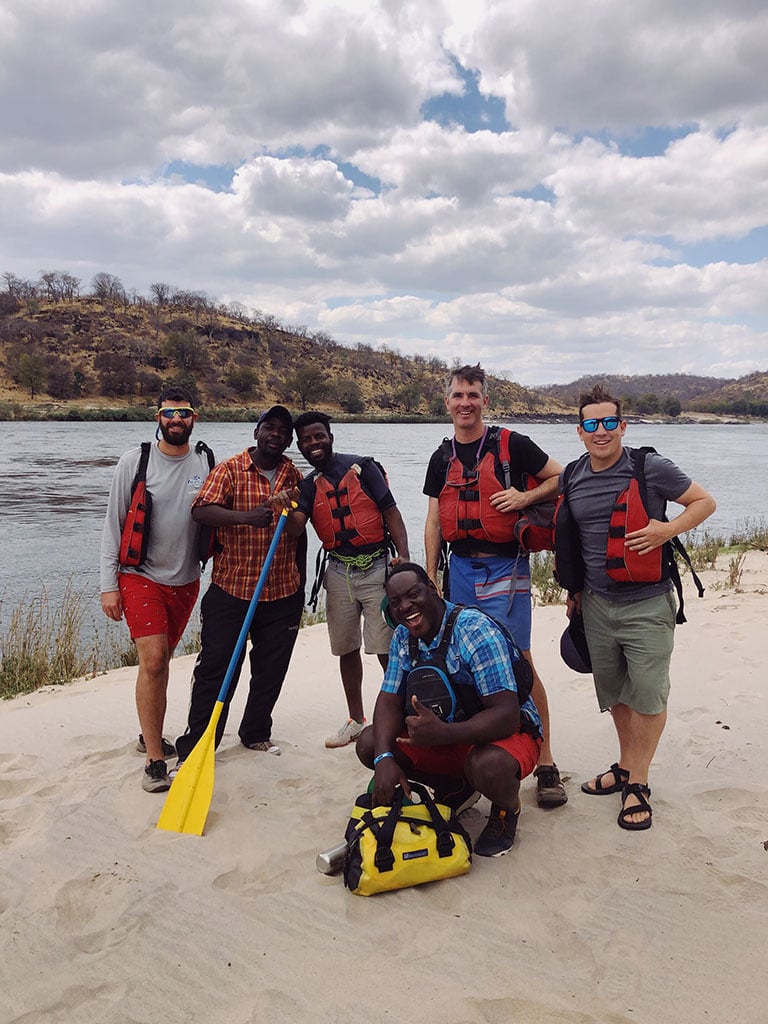 Take-out point on Day 7. Pictured from left to right – Back Row: Robert Skuncik (author), Kevius Zulu (gear raft guide), Darwin Stumbeko (cataraft guide), Wade Eyerly (passenger), and Brandon Carlton (passenger). Front Center: Lovemore Kalinda (lead kayak guide). Not Pictured: Isaac Nyonyi (passenger raft guide), John Mason and Rachel Hirshhorn-Mason (passengers).
Take-out point on Day 7. Pictured from left to right – Back Row: Robert Skuncik (author), Kevius Zulu (gear raft guide), Darwin Stumbeko (cataraft guide), Wade Eyerly (passenger), and Brandon Carlton (passenger). Front Center: Lovemore Kalinda (lead kayak guide). Not Pictured: Isaac Nyonyi (passenger raft guide), John Mason and Rachel Hirshhorn-Mason (passengers).The Upper Zambezi and Victoria Falls
My first evening on the river was a misleading sunset river cruise on the upper Zambezi above Victoria Falls. An easy-going float around wide bends in the river, allotted our group glimpses of hippos and bee-eaters. We were indulged with local fare and an awe-inspiring African sunset over the lazy river.
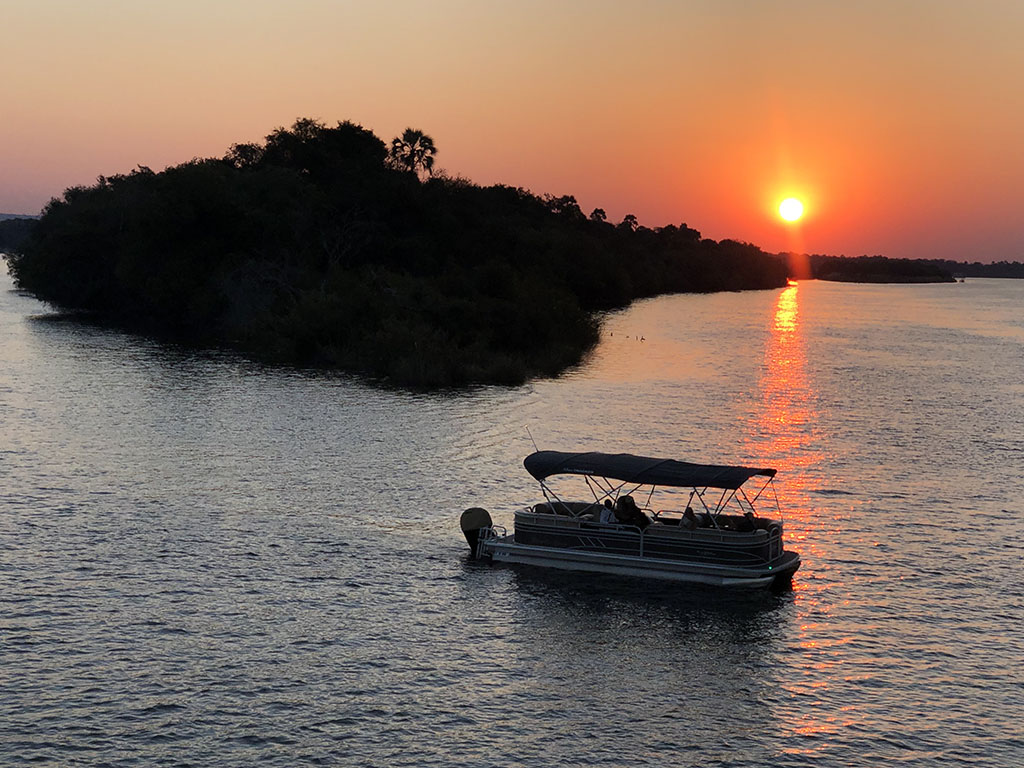 A sunset over the Upper Zambezi just above Victoria Falls.
A sunset over the Upper Zambezi just above Victoria Falls.The late evening pleasantries gave way to the main event the next morning as our group witnessed spectacular views of Victoria Falls in Mosi-oa-Tunya National Park; followed by a 2-mile hike down to the put-in point, hundreds of feet below the top of the gorge walls on the Zambian side of the river.
In the Batoka Gorge
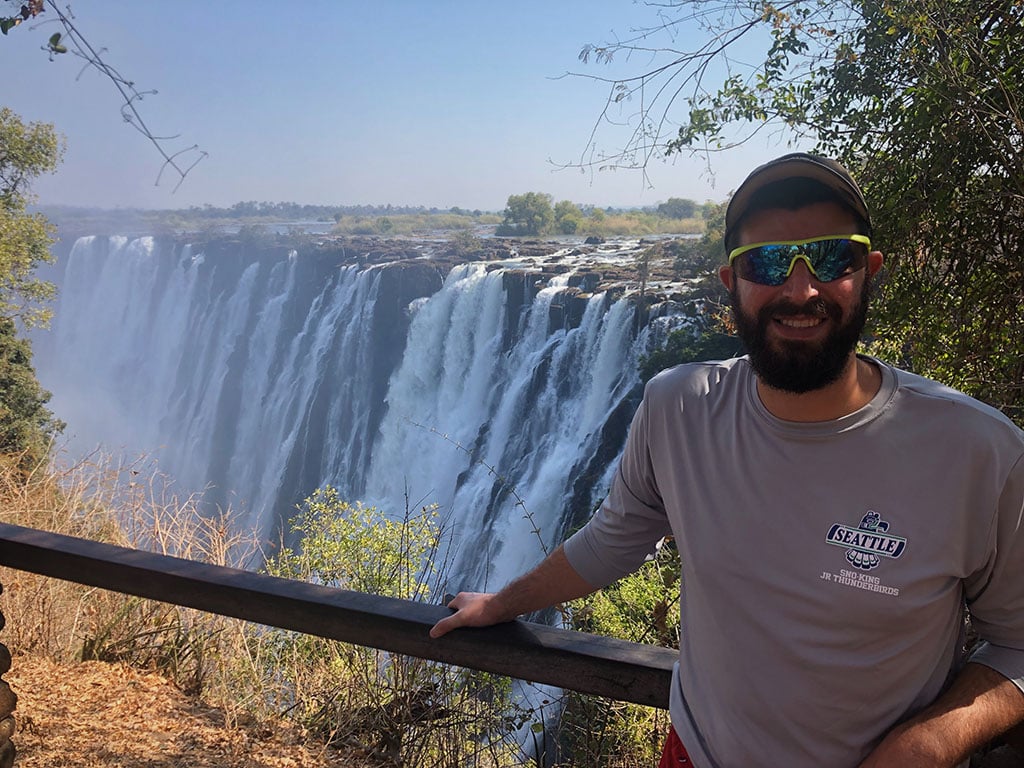 Robert Skuncik, author, posing at a Victoria Falls viewpoint in Mosi-oa-Tunya National Park, Zambia.
Robert Skuncik, author, posing at a Victoria Falls viewpoint in Mosi-oa-Tunya National Park, Zambia.After lunch, our small flotilla hit the water with a passenger stern-mounted oar/paddle combination raft, safety cataraft, and lead kayak. Due to limited afternoon sunlight during the African winter, we only ran two rapids before reaching camp, where we were greeted by our porters and gear raft. We camped on a sandy beach surrounding a pond so serene it created a flawless reflection of the encompassing basalt edifices.
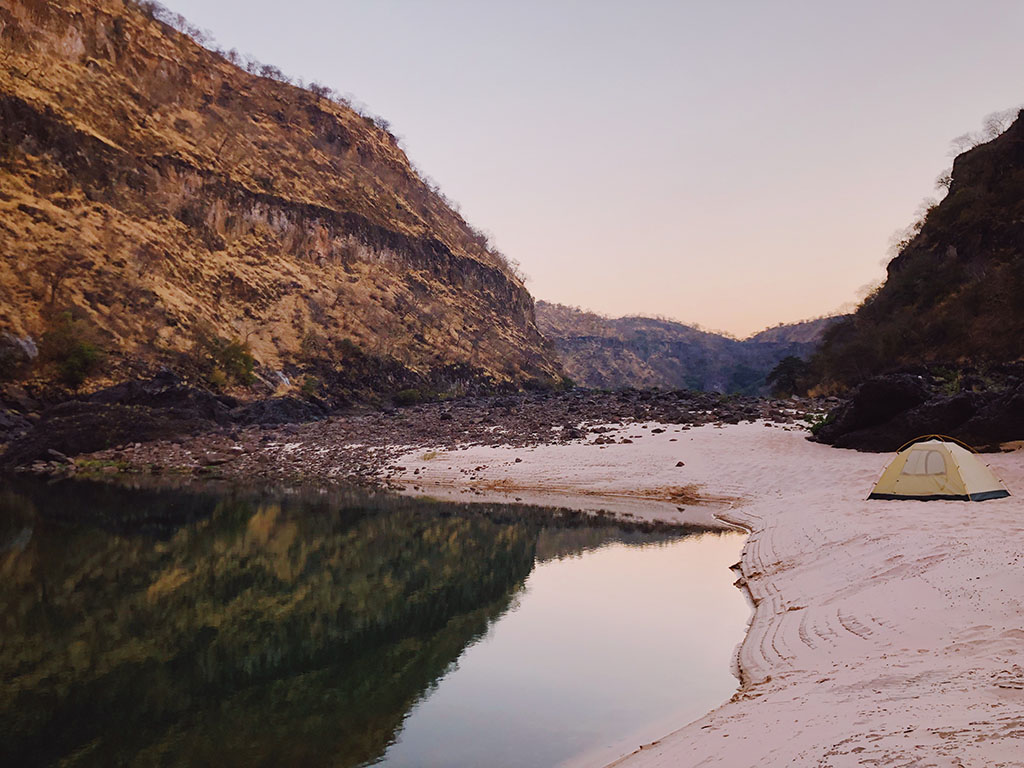
As darkness fell upon camp, we were presented with an exquisite display of constellations, planets and purple ribbons of the Milky Way galaxy. Luck would have it that our trip began on a new moon. With no light pollution, each night was a treat to our unspoiled eyes.
That night, I learned why we were instructed to bring an adequately warm sleep system as temperatures plummeted from mid-90’s to low 40’s. I was glad to have packed my Trail Pro™ Sleeping Pad, Ohm™ 32F/0C Sleeping Bag, and Air Head™ Down Pillow; allowing me to remain warm and comfortable all six nights. I learned that on multi-day whitewater rafting trips, good rest is essential.
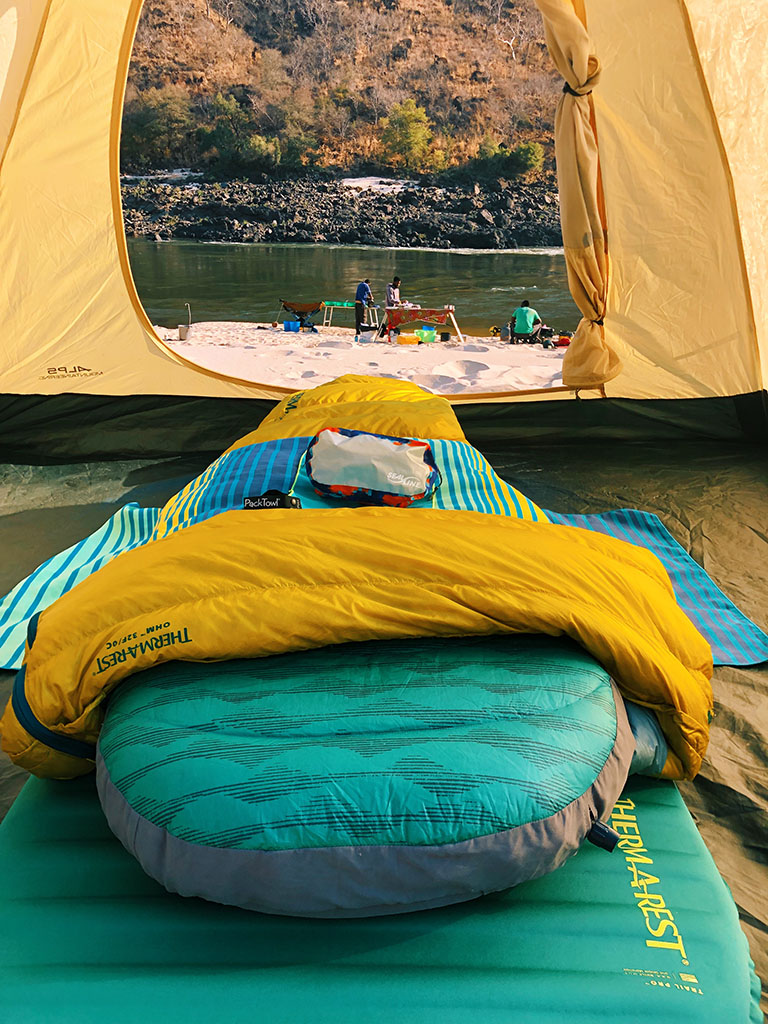
The next morning, we packed up and hit the river for what turned out to be the most memorable day on the water. After running the rip-roaring wave train of the Three Ugly Sisters (rapid #12), we finished off the Mother (rapid #13). However, on The Mother, the D-rings on the cataraft gave out and flipped one of the bottom chafing tubes upside down. Luckily, our convoy caught an eddy allowing our guide team to perform an on-water repair. After an exciting morning on the river, we grabbed lunch at a sandy beach just below a tall, trickling waterfall.
The afternoon held more hair-raising class IV and V rapids. The Terminator II (rapid #16B) slammed us into a wall of water, nearly ejecting me from the raft. Finally, we made it to Bobo Camp for a well-deserved restful night. Our meal that night was highlighted by Zambezi Cabbage, a local, savory side dish.
Below the Batoka Gorge
Our third day on the river was noted with a change in the landscape. The imposing basalt cliffs gave way to sun-scorched golden hills dotted with baobab trees and velvet monkeys. This also marked the end of our journey through the numbered rapids (1 – 26) of the middle Zambezi.
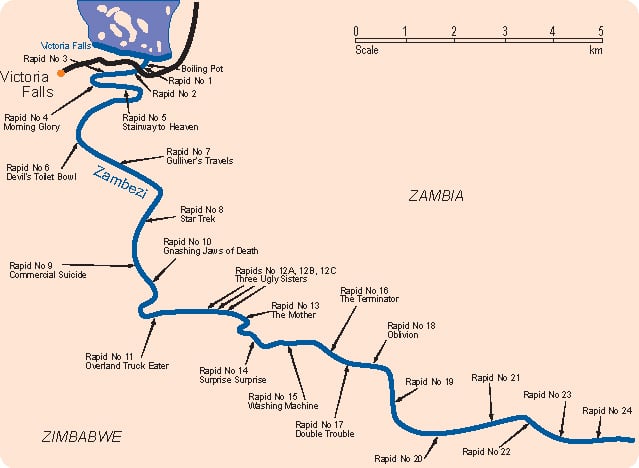
As we entered the narrows, our afternoon was filled with bubbling boils and churning whirlpools strong enough to stall and capsize rafts. Before camp, we encountered the Upper Moemba Falls. It required running a narrow passage flanked by rocks and a 5-foot drop over the falls followed by a strong current that jettisoned our rafts right to Moemba Camp.
Day four was highlighted by the infamous Ghostrider rapid. Before reaching Ghostrider, we paddled through the proposed hydroelectric dam site and abandoned the cataraft before a portage of the raging Chabango Falls. Next up was the Son of Ghostrider, a short rapid with high waves and whirlpools.
As we approached Ghostrider, we could see the whitecaps of the wave train flowing at unprecedented speed. Ghostrider is a thrilling, long wave train that filters into a minefield of whirlpools. Our raft nearly capsized in one hole before we escaped, quickly getting sucked into a whirlpool that began folding the rockers of the bow and stern skyward forming a crease between the middle thwarts of our raft.
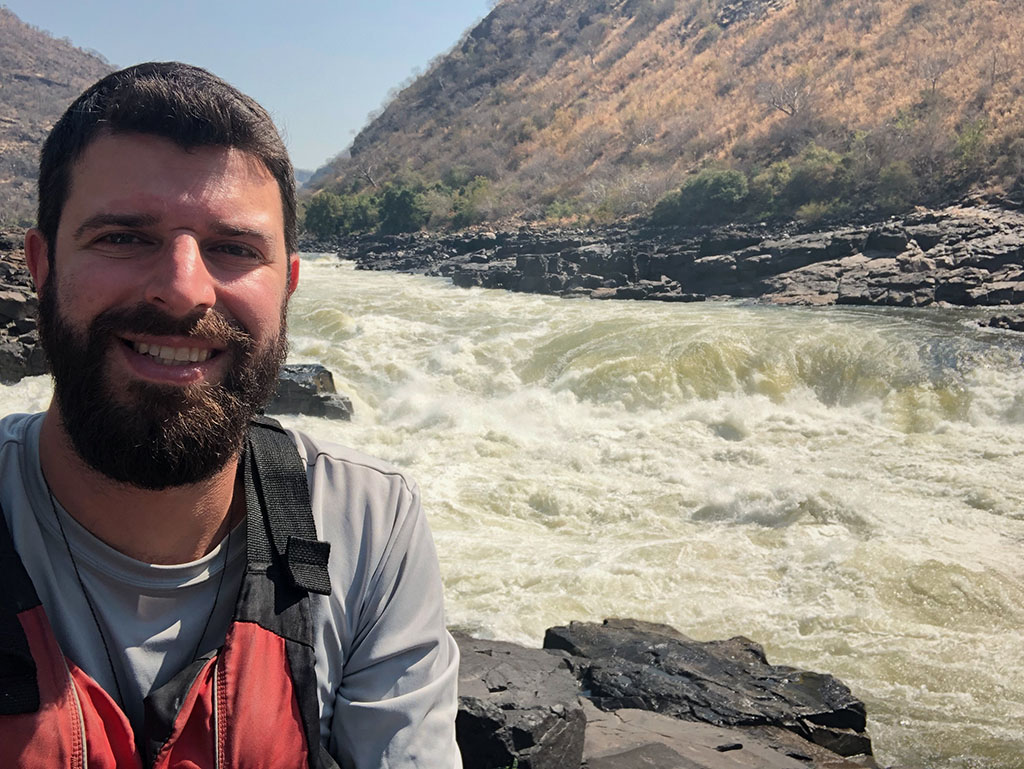 Robert Skuncik, author, at Chabango Falls on Day 4; just below the proposed hydroelectric dam site.
Robert Skuncik, author, at Chabango Falls on Day 4; just below the proposed hydroelectric dam site.Our afternoon continued on mostly flat water with the exception of the portage of the class VI rapid, Deep Throat. This afternoon cruise also featured our first crocodile. A sleeping 9-footer who blended in with the sable-colored rocks on the river bank. That evening was marked by our first camp on the Zimbabwe side of the mighty Zambezi.
The next morning, we rose for our ‘layover’ day, but still had to make camp as we were behind schedule. Our morning paddle included numerous gangs of baboons screeching at us from the river bank. But was highlighted by a pestering crocodile who charged and followed our gear boat for about 100 meters before circling around and retreating. After arriving at Sleep at the Wheel Camp, we had an easygoing day capped with a hike to a secluded sulfur hot spring and visit to a fisherman camp where we tried smoked bream. To finish the hike, we hiked up a hill for sweeping views of the surrounding valley.
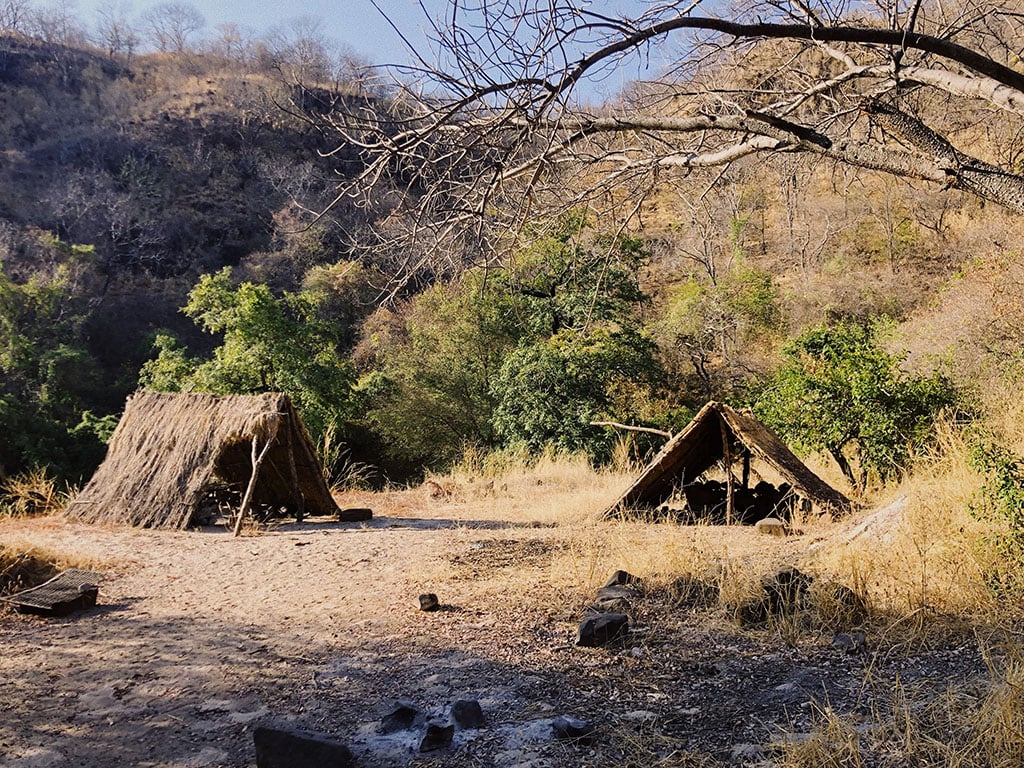 A typical fishermen camp on the Zambezi River; Day 5 during our afternoon hike.
A typical fishermen camp on the Zambezi River; Day 5 during our afternoon hike.Day 6 was our longest day on the river; we paddled over 24 miles on flat water with challenging headwinds through a few class I, II, and III rapids. As we traveled further down river, our whitewater rafting trip transformed into a wildlife cruise as the valley continued to widen and the hills grew shorter. We spotted over 20 khaki-colored crocodiles and countless river otters, klipspringers, and rock rabbits.
Finishing the Trip
When we awoke the following morning at Hippo Camp, the orchestra of ribbiting frogs yielded to a cacophony of howling baboons. Our morning cruise through class I and II rapids included more wildlife including fish eagles. The landscape continued to flatten out with the hills finally giving way to open plains with many farmers and herds of cattle. The morning was highlighted by a couple of ornery hippos. We did not see them in the water and got too close; one of the hippos charged our boat. We witnessed its eyes and ears come closer and closer to our boat as we paddled feverishly to escape their territory. Thankfully we managed to put enough distance between us and the hippo that our status as a threat abated. Not long after those frantic moments, we reached our take-out point.
After unloading our rafts, it was time for an epic helicopter ride through and above the Batoka Gorge; revisiting the past week’s trials and tribulations from a bird’s eye view. Over the course of our 7-day expedition, we traveled over 100 river miles downriver, soaking in all of the aquatic, geological, floral and faunal wonders the mighty Zambezi has to offer.
Reflecting
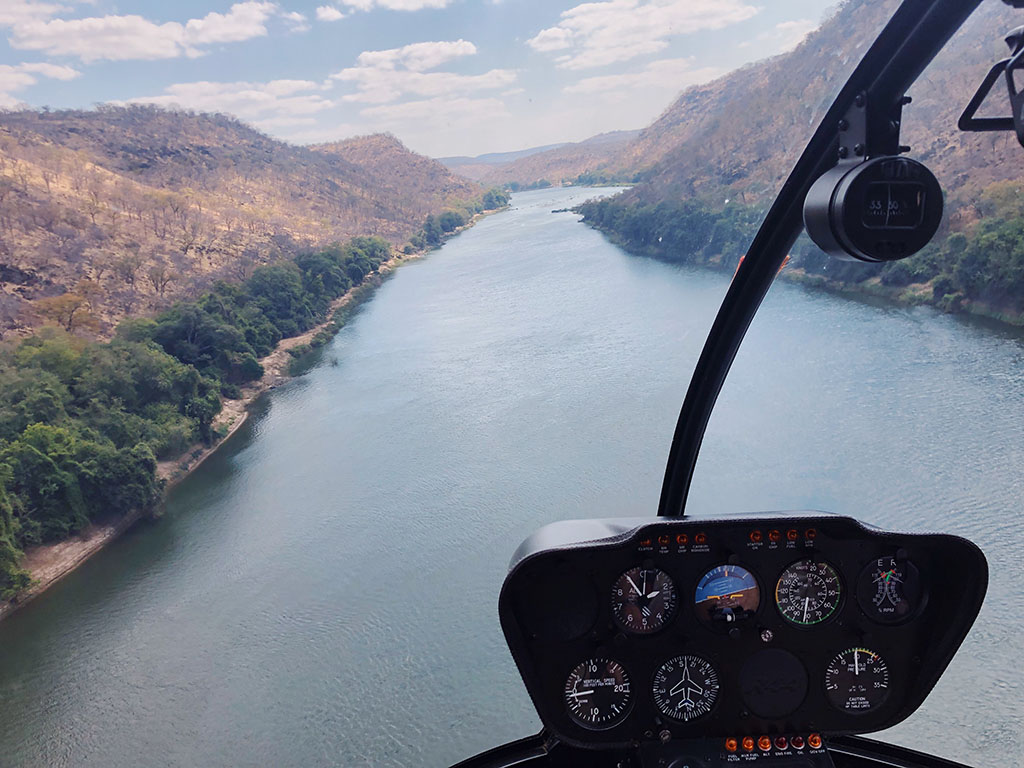 My view from the passenger seat on our helicopter trip through the Batoka Gorge on Day 7.
My view from the passenger seat on our helicopter trip through the Batoka Gorge on Day 7.As I peered out of the helicopter into the gorge, reflecting on my unforgettable trip, I couldn’t help but be tinted with sadness. It occurred to me that whitewater rafting on the Zambezi River is a trip that may become a figment of the past. If the proposed Batoka Gorge Dam is indeed built—which is looking likely—it would create a reservoir that stretches all the way up the canyon to within a half mile of the put in below Victoria Falls, completely swallowing the roaring rapids and eliminating the possibility of whitewater rafting.
I was grateful that I was able to experience this un-altered river, but I thought about my guides, the fisherman and the thousands of locals that depend on tourism for their livelihoods. The sadness I felt probably pales in comparison to what they feel.
The Gear
Recommended Cascade Designs Gear List (not exhaustive):
Therm-A-Rest Sleep System
SealLine Dry Bags/Accessories
- Discovery™ Dry Bag (50L) or Classic Zip™ Duffel (75L)
- 4x – Blocker™ PurgeAir™ Dry Sack 5L (or BlockerLite™ Cinch Sack 20L)
- Discovery™ Deck Dry Bag (10L)
- 2x Blocker™ Zip Sack (M)
- E-Case®
MSR Water Accessories
- Guardian™ Purifier
- Dromedary™ Bag (1 – 10L bag for every 3 people)
Packtowl
- Personal Packtowl (quantity and sizes vary based on preference)
Related Posts:
